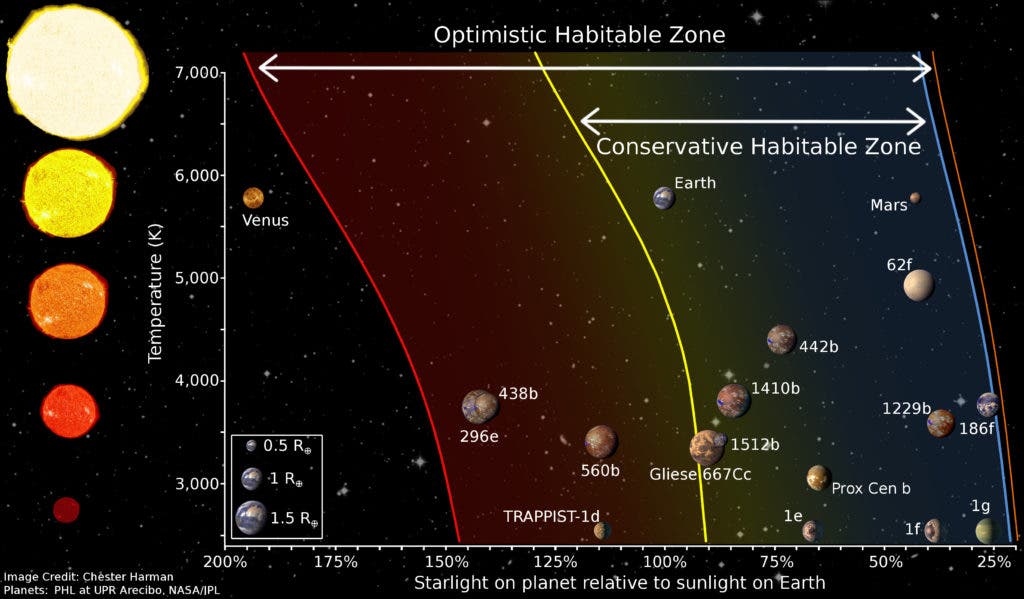Intense radiation could peel off the ozone layer around Earth-like planets, essentially wiping out all land life in the process.

A diagram of the Habitable Zone, sometimes called the Goldilocks Area. Shown is temperature vs starlight received. Some notable exoplanets are placed on the diagram, plus Earth, Venus, and Mars. Image credits: Chester Harman.
Astronomers have already discovered over 3,700 planets orbiting stars other than the Sun. Out of them, several are rocky and comparable in size to Earth, and out of these, some are in the so-called Habitable Zone — orbiting their stars in just the right range that allows for liquid water to exist on the surface. But just because they’re in the Habitable Zone that doesn’t necessarily mean they’re habitable.
Most planets we’ve found so far (and presumably, most in our galaxy) orbit red dwarf stars — relatively cool stars, significantly smaller than the sun. In order to be in the habitable zone, planets around red dwarfs need to be closer to their star, which exposes them to X-rays.
Although they’re smaller and cooler, red dwarfs can produce significant X-ray emissions, often during large flares of radiation and eruptions of particles in so-called coronal mass ejections (CMEs). In order to assess the risk of such an ejection, Eike Guenther of the Thueringer Observatory in Germany has been monitoring CMEs from red dwarfs. Just last month, he observed a giant flare from the star AD Leo, located 16 light years away in the constellation of Leo.
AD Leo hosts a known giant planet and potentially many others which we haven’t discovered yet. Guenther’s initial results showed that the giant planet was unaffected, and unlike most flares in our solar system, the radiation flare was not accompanied by a CME. This is good news for life around red dwarfs — around smaller stars, X-ray ejections aren’t that common, so there’s a smaller chance of a devastating X-ray event.
But even so, if such an ejection does take place, it could easily cut through the atmosphere of an Earth-like planet, reaching the surface, and wiping out 94% of the planet’s ozone layer — enough to destroy all land life. Astronomers warn that if there’s an event that could be fatal for most or all life on the planet, a small chance isn’t small enough.
“Astronomers are mounting a global effort to find Earth-like worlds, and to answer the age-old question of whether we are alone in the Universe. With sporadic outbursts of hard X-rays, our work suggests planets around the commonest low-mass stars are not great places for life, at least on dry land,” Guenther concludes.
The study has not yet been peer-reviewed and will be presented at the European Week of Astronomy and Space Science.









